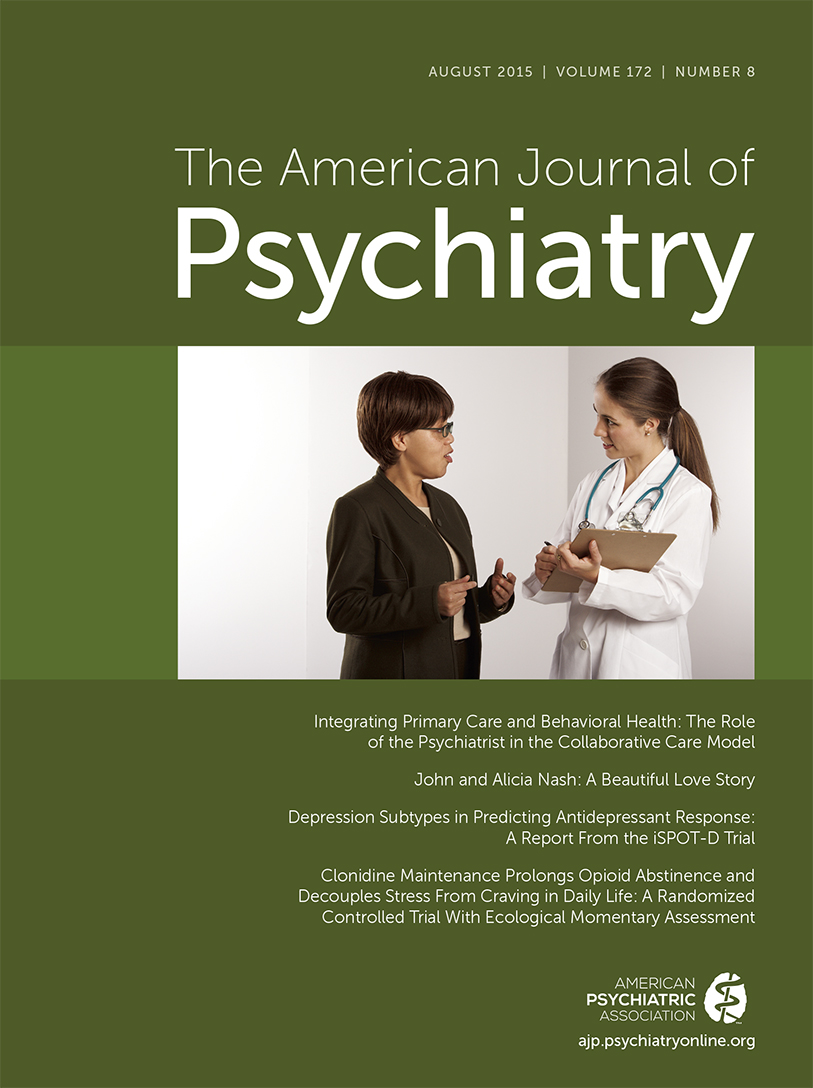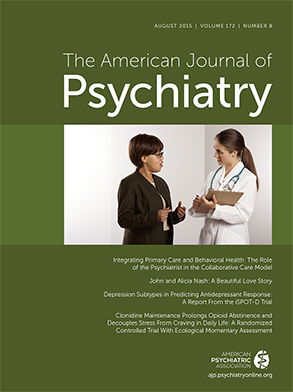To the Editor: In the March issue of the Journal, we proposed a model of perimenopausal depression development whereby, in some women, estradiol fluctuation triggers alterations in γ-aminobutyric acid (GABA)–ergic regulation of the hypothalamic-pituitary-adrenal (HPA) axis. In our proposed model, HPA axis dysregulation would, in turn, increase sensitivity to stress and vulnerability to depression. The results reported by Dr. Eskola et al. suggest that although depressive symptoms and insulin resistance are not associated among younger women, a positive association emerges between these two variables in midlife women. They speculate that HPA axis dysregulation, triggered by perimenopausal estradiol fluctuation, may underlie this emergent association.
We would like to thank Dr. Eskola et al. for sharing these interesting findings—they provide preliminary data on biological mechanisms that may increase vulnerability to depression specifically in midlife women and, in so doing, are compatible with our proposed model. The lack of a relationship between age, insulin resistance, and depressive symptoms in men, who were tested at equivalent ages, strongly indicates that advancing age alone is not responsible for the emergence of a relationship between depressive symptoms and insulin resistance in midlife women. In light of the inconsistency with which depressive symptoms have been associated with insulin resistance (
1), these findings suggest that for women, life stage may be an important moderating variable that could help to disentangle the literature’s equivocal findings.
However, we would encourage caution in interpreting their results. Notably, the authors use age as an indicator of menopausal status. At age 46, many women are not likely to meet standard reproductive staging criteria for being in the menopause transition based on bleeding patterns. Nonetheless, hypothalamic-pituitary-gonadal axis changes are gradual as women advance in age and can precede changes in bleeding patterns. Consequently, the ovarian endocrine environment is likely to be different in women aged 46 compared with those aged 31. Unfortunately, the lack of a postmenopausal sample of women for comparison makes it difficult to speculate whether the emergent relationship between depressive symptoms and insulin resistance at age 46 is related to estradiol fluctuation or lower absolute levels of estradiol (relative to levels at age 31).
Despite these limitations, the results reported by Dr. Eskola et al. help to advance our understanding of health risk in midlife, which is clearly a unique phase in women’s lives. Furthermore, their findings remind us of the important physical health implications that perimenopausal depression and/or its precursors may have. The preliminary results reported by Eskola and colleagues, framed within our heuristic model of perimenopausal depression, support future research simultaneously measuring estradiol fluctuation, cortisol, and insulin resistance in women at different reproductive stages. Such research will help to clarify whether estradiol fluctuation and, in turn, HPA axis dysregulation are driving the findings reported by Eskola et al. Alternatively, experimentally stabilizing perimenopausal estradiol fluctuation would provide another test of Dr. Eskola and colleagues’ hypotheses (and our heuristic model) that estradiol fluctuation contributes to both perimenopausal depressive symptoms and insulin resistance by triggering HPA axis dysregulation.

